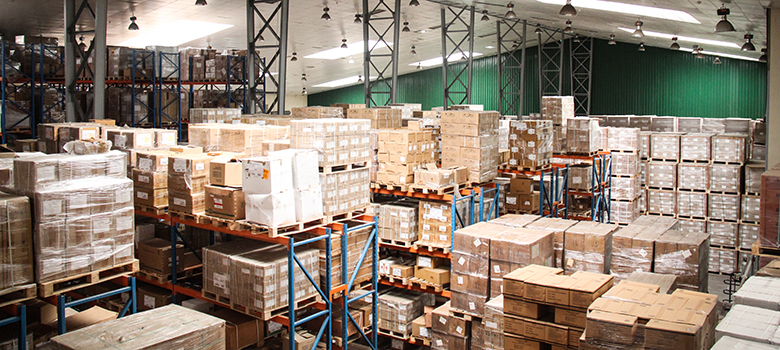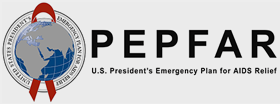
From the agricultural to the health sector, an enormous quantity of commodities moves through supply chains. But as these agricultural goods, medicines, or health commodities travel all the way from manufacturer to patient, how can we continuously monitor their temperature and conditions to maintain their quality and effectiveness? This is particularly vital in the health sector. How will we know if a critical lifesaving medicine has exceeded its temperature limit and has been rendered less effective for the patients who need them?
Although occasional temperature and humidity monitoring of ambient products is conducted at the central, regional, and district-level warehouses in developing countries, continuous monitoring along in-country transport, during storage facilities, and throughout last-mile distribution by community health workers is limited. However, the costs of not having this type of visibility are even higher: It is estimated that the losses associated with temperature excursions in the health industry amount to $35 billion per year. The World Health Organization has established good distribution practices for pharmaceutical products, including having defined intervals for checking temperature with records of data available for review, but even this is limited along many global health supply chains due to a lack of visibility across the supply chain and the appropriate resources for monitoring and analysis.
The USAID Global Health Supply Chain Program-Procurement and Supply Management (GHSC-PSM) project is researching and testing how to effectively capture temperature and humidity data more consistently across the supply chain. The process began with understanding key aspects of the commodities themselves and the conditions they face:
- All products have temperature and humidity limits.
- Absence of monitoring systems creates minimal visibility.
- There are many different types of products.
- Many storage locations are throughout the supply chain with differing conditions.
- Products are often transported with no climate control.
- There’s a focus in developing countries on central warehousing conditions but less on storage facilities at regional or district levels.
- Industry guidance from WHO, USP, and others exists but isn’t always followed.
Despite these challenges, the age of “the internet of things” (IoT) helped inform a smart solution. The IoT is the evolution of mobile, home, and embedded devices that are connected to the internet, integrating computing capabilities and using data analytics to extract valuable information. Thanks to this data interconnectedness, smart technology in the form of temperature and humidity monitoring sensors can now be installed along the supply chain to provide greater visibility into the conditions experienced by health commodities.
These easy-to-use wireless sensors, combined with intuitive mobile and web applications, produce an enormous amount of climate data and insight into temperature and humidity excursions for cold chain and ambient products. This data can then be aggregated, analyzed, and displayed through interactive dashboards. Most importantly, supply chain managers can use this data to inform mitigation strategies and best practices for storage and transport of medicines, ensuring they remain safe and effective for patients.
Since October 2017, the GHSC-PSM project has been piloting temperature and humidity monitoring sensors in Mozambique. The first step included an extensive search of the sensors and various technologies on the market to ensure their applicability in other low-resource environments beyond Mozambique, and in other sectors beyond health. This technology changes rapidly, and there are constantly new entrants into the market. The project’s review not only sought to ensure that the selected option met the requirements for the type of monitoring needed, but would also work in the environments in which they would be deployed. GHSC-PSM then tested samples of sensors which met these criteria.
Next, the project analyzed the commodity environment to determine the variations in temperature and humidity they experience throughout the supply chain, from manufacturer to patient.
Temperature and humidity sensors were installed in 12 central, provincial, and district warehouses, as well as 12 clinics, three hospitals, four vehicles four trucks, and three boxes carried by community health workers throughout Mozambique. In most locations, sensors were placed on both the outside and inside of the building or truck to determine how the external temperature impacts the internal temperature over time. This helps GHSC-PSM not only learn if the temperature exceeds acceptable levels but also better understand external/internal temperature correlations to apply predictive analytics can be applied and make recommendations for improvements as needed.
As a next step, GHSC-PSM is assessing the data and will provide recommendations for reducing or eliminating temperature excursions in Mozambique, with the aim of extending this learning to other countries and sectors. The project expects that solutions will be practical and low-cost, and will range from improvements to warehousing, transportation, and packaging.
The continuous monitoring and measurement of climate data for health commodities is not only crucial but now achievable in understanding the frequency, duration, and range of climate excursions. While we’ve long been challenged by the lack of continuous temperature and humidity data for commodities along supply chains, innovative temperature and humidity sensors now offer a practical solution. With this wealth of continuous data, supply chain managers can mitigate temperature excursions and ensure that the most effective, high-quality health commodities reach patients.


